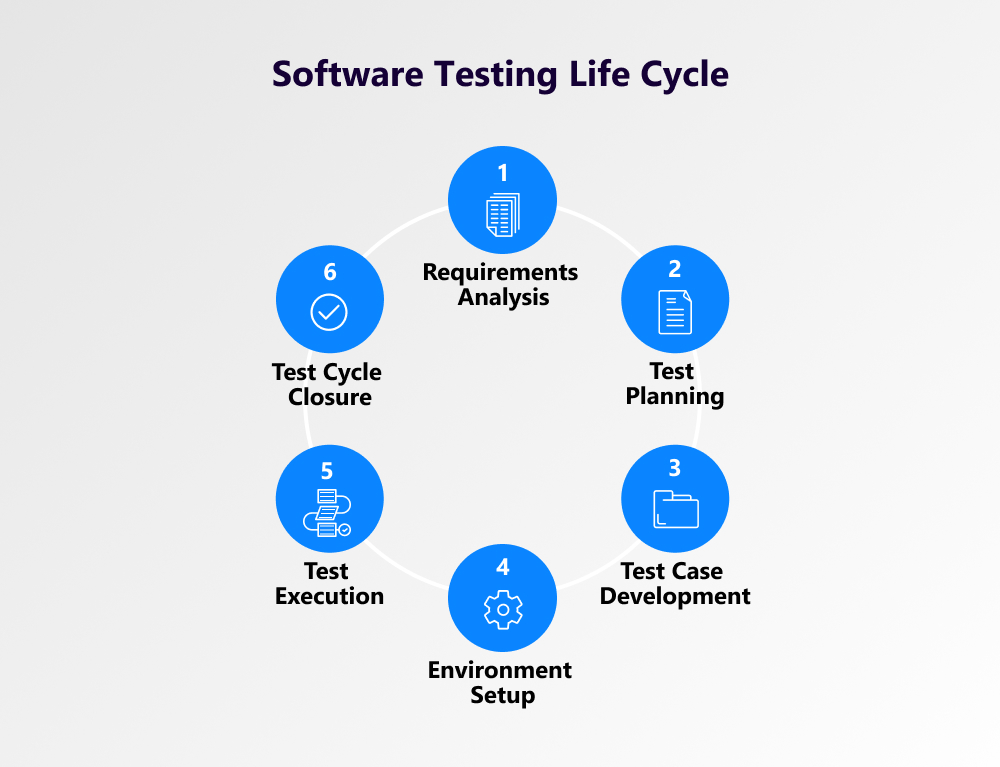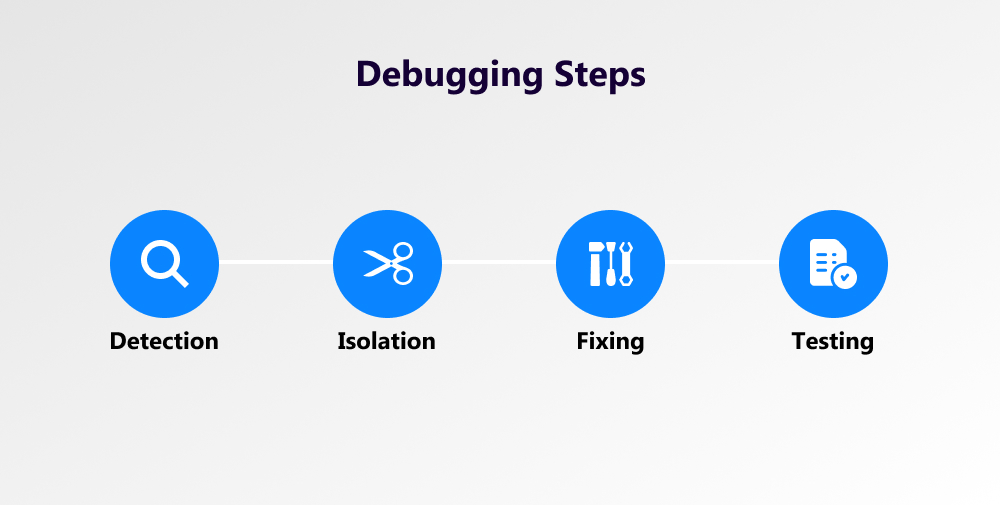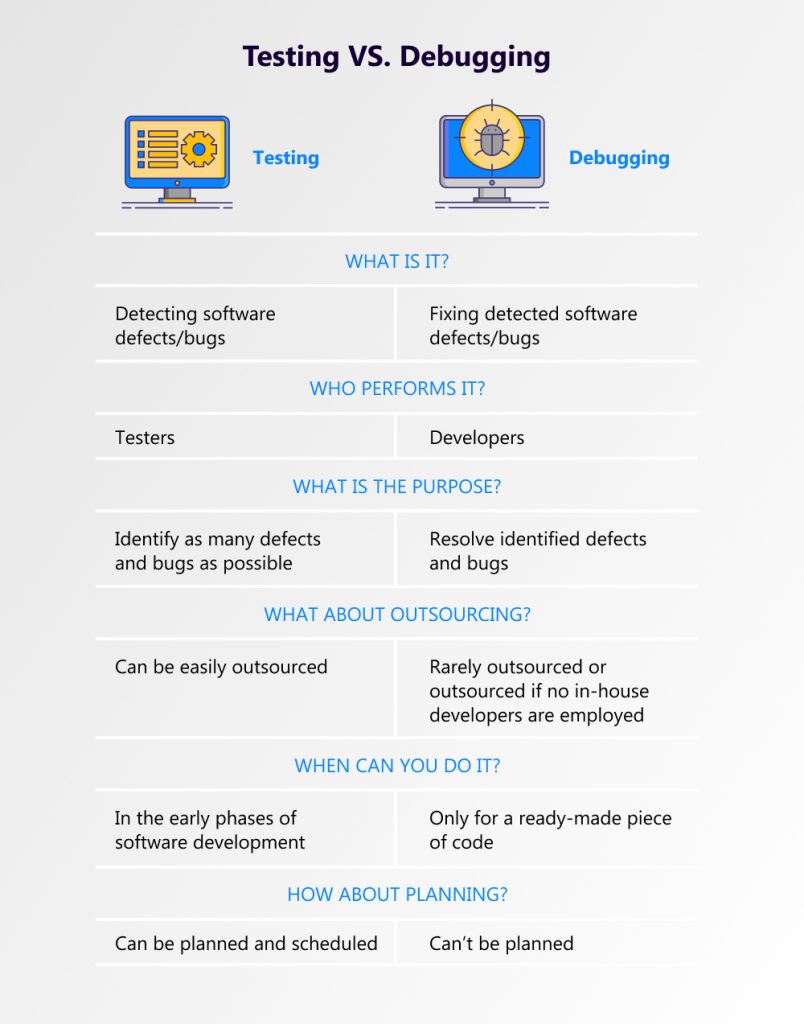Both testing and debugging are integral phases of software development. Although the processes fundamentally have the same goal — generating the best quality product that will satisfy all users – these are completely different concepts. Read more to see how both teams — testing and development — have to polish the product before its full release, so that you can take delight in smooth, safe, and trouble-free software operation.
written by:
Anastasia Borodinets
Both testing and debugging are integral phases of software development. Although the processes fundamentally have the same goal — generating the best quality product that will satisfy all users – these are completely different concepts. Read more to see how both teams — testing and development — have to polish the product before its full release, so that you can take delight in smooth, safe, and trouble-free software operation.
This time we are going to provide you with a deeper view of these processes that are often wrongly assumed to be identical. We will share their clear and easy to understand definitions and outline basic steps. For a real 360 degree perspective, we have also created a convenient table comprising the most important information regarding testing and debugging.
Why in Such Demand?
Given the number of apps getting to the market every day, it is no wonder that the demand for testing and debugging specialists has never been so high before. Moreover, as the cost to fix bugs and defects at the post-release phase is extremely high, numerous companies try to initiate testing and debugging at the earliest stage possible. Yet, what exactly do these two things mean? Do they always come together and make up a single process, or do they serve completely different purposes?
The difference between testing and debugging lies on the surface and can be understood simply by reading the definitions. We are not going to make things complicated for you, so we chose the simplest definitions possible, those that even a newbie will understand easily.
Let’s get the party started!
What is Software Testing?
The description below, in our opinion, gives the most accessible and uncomplicated definition of testing.
Before delivering any new system, the app or software needs to be properly tested. In simple words, testing is a process to check whether the software works as it was supposed to or not. A tester or a group of testers try to find defects in the system manually or using special test automation tools (Selenium, TestComplete, Silk Test, Squish, Katalon Studio). If they identify any defect or error, they report this information to developers who then proceed with debugging and fixing. When the dev team is done with debugging the defects, the tester has to retest the bug to be sure that the system is error-free.
Testing can be carried out at any stage of module development. For instance, testers can join the team during interface and algorithm design, implementation, integration, etc.
Thus, we’re clear about the definition, how about diving deeper into the process? Let’s investigate the stages that the software testing process consists of.
Software Testing Life Cycle
The STLC includes five specific steps that should be completed one after another. Each phase has different goals and deliverables. These phases may vary a little in different companies. However, the basic sequence of steps looks like this:
Requirements Analysis
During this phase, the Testing and Quality Assurance team evaluates feature requirements to determine testable aspects. Testers may meet with the stakeholders to clarify requirements, if necessary.
Test Planning
This is the phase during which a testing strategy is developed. At this phase, the test manager determines the estimated effort and cost for the project. The requirements analysis prepared by BAs serves as a basis for a test plan. Once the plan is ready, the QA team can move on to test case development.
Test Case Development
At this phase, the testing team creates test cases and automation scripts. This phase also involves preparing the required test data. Finally, the QA team reviews and reworks the prepared test data.
Environment Setup
This critical part of the STLC implies testing environment configuration and deployment. The testing team isn’t involved in this process if test environments are provided by the developer or the customer. At the same time, to check the functionality of the deployed environments, testers are required to prepare smoke test cases.
Test Execution
The testers’ main task at this phase is to execute the prepared test cases. Testers then report the results to the development team which should fix the defects.
Test Cycle Closure
The last stage of the STLC is preparing a test closure report, which summarizes all the tests performed during the STLC, and describes all the types and number of the defects found.
Well done! You’re now well aware of what testing means and what stages it includes. However, to 100% understand the difference between testing and debugging in software testing, you need to know both definitions. So let’s move on to the second one.
What is Debugging?
Debugging is the process performed by the developer or the software development team after getting the test report about the software or system defects. The developer’s job is to find the cause of these defects. It can be done by rechecking the code manually or using debugging tools (Sentry, OllyDbg, IDA Pro, WinDbg), paying special attention to the challenging code parts. If a bug or error is detected, the respective portion of the code is modified. Then the developer should recheck if the defects are finally corrected. Once the debugging is completed, the tester proceeds with the software testing process.
Just like testing, debugging can be divided into distinct stages. Have a glance at what the programmer should do to fix errors found at the testing stage.
 1. Detection
1. Detection
Detection is the first phase of debugging. The developer should discover the nature of the bug. To do this, the dev should reproduce the problem under the exact conditions reported by the tester. In other words, the problem the testers found under specific conditions using their equipment should reappear on the dev equipment under the same conditions.
2. Isolation
This debugging phase involves the separation of a buggy part of the code from the other, healthy part. Such separation will help the dev protect the healthy part of the code from any changes that may occur when he/she makes corrections in the buggy code. It also helps the dev save time on testing.
3. Fixing
A core part of debugging. Fixing can modify system behavior and produce unexpected results. Hence, it is very important to have an intimate knowledge of the system. The most common problem faced by developers is that fixing one bug can bring the hidden bugs to surface. In some cases, fixing can be simple, while in the worst case, a total rewrite may be required.
4. Testing
Testing is the final stage which should be performed to ensure that the program runs correctly. The dev also needs it to be sure that debugging has not affected other parts of the program.
Thus, now the difference between software testing and debugging is clear to you. Below, we offer you an easy comparison table where we’ve summarized key points regarding the difference between testing and debugging in software engineering.
Key Take-Aways
Together we have learned what testing and debugging are. These are both crucial parts of the software testing cycle which help users enjoy the resulting product. Although testing is aimed at finding software errors, it is developers who do the debugging part: they analyze these errors and eliminate them, ensuring you work with a smoothly running program.
Do not overlook these processes as insignificant, especially if yours is a large-scale system with multiple interdependencies and modules. By skipping the QA part, you risk losing a large share of your potential audience, as modern users are more scrupulous and demanding than ever. Testing and debugging are there to help you win them all.
In case you’re willing to make the best use of testing and debugging but have no proper human resources for this, you can entrust these sensitive processes to Qulix Systems. Well-trained and experienced testers and developers know exactly how to optimize your product, make it outstanding and super-powerful. We believe that only greatly designed and well-tested solutions can guarantee your company stays competitive and flourishing in today’s tough business environment.
Meet your greatest IT challenges with us! Get in touch with our support team for more details or visit our website.

Contacts
Feel free to get in touch with us! Use this contact form for an ASAP response.
Call us at +44 781 135 1374
E-mail us at request@qulix.com






 1. Detection
1. Detection


